MOCAP Education: The basics of human movement analysis
Available in:
EN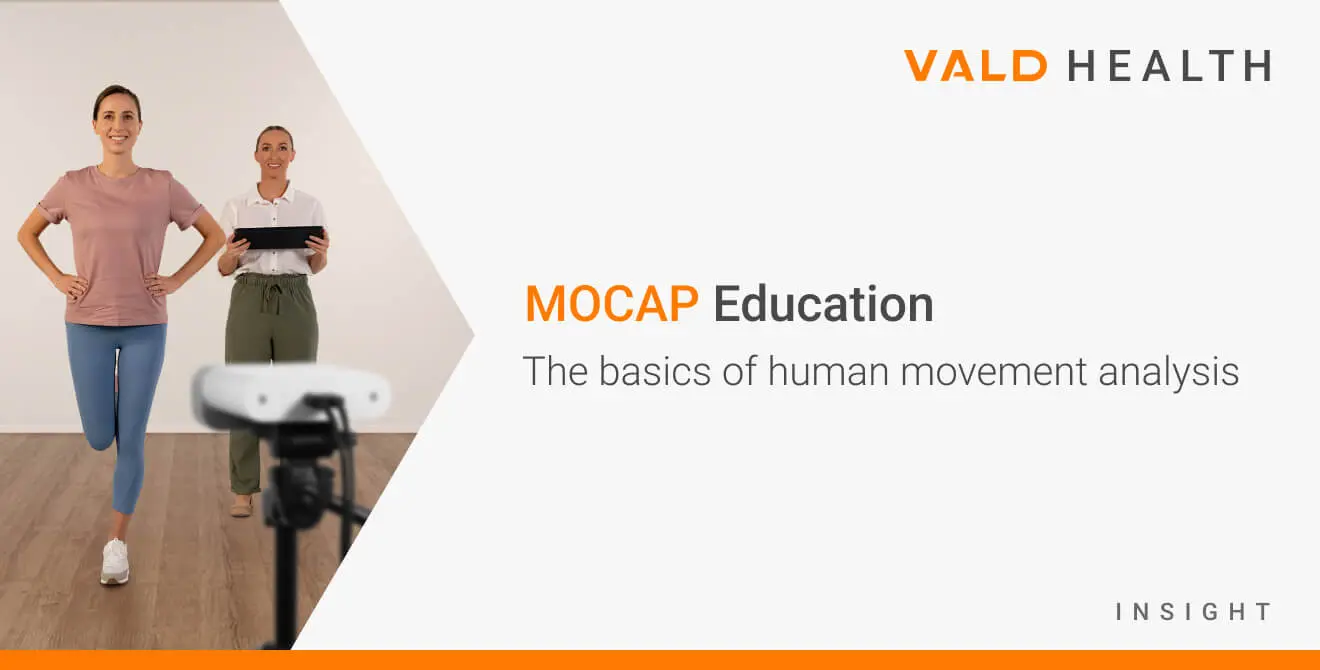
Do you know the basics of movement analysis and how HumanTrak measures movement?
In this blog, we explore the basics of human movement analysis, and in particular, movement capture (mocap) using the HumanTrak Movement Analysis System.
Topics:
MOCAP 101: An intro to human motion capture with HumanTrak
MOCAP 102: Human movement reporting with HumanTrak
MOCAP 103: Centre of mass and HumanTrak
Key takeaways
- Motion capture (mocap) is essential to understanding how our movement is influenced by pain, disease, and injury, and how movement can be improved through targeted training.
- VALD’s HumanTrak movement analysis system uses sophisticated machine learning and post-processing algorithms to track full body motion with only a single camera.
- HumanTrak measures the translations and rotations of 23 joints in the body.
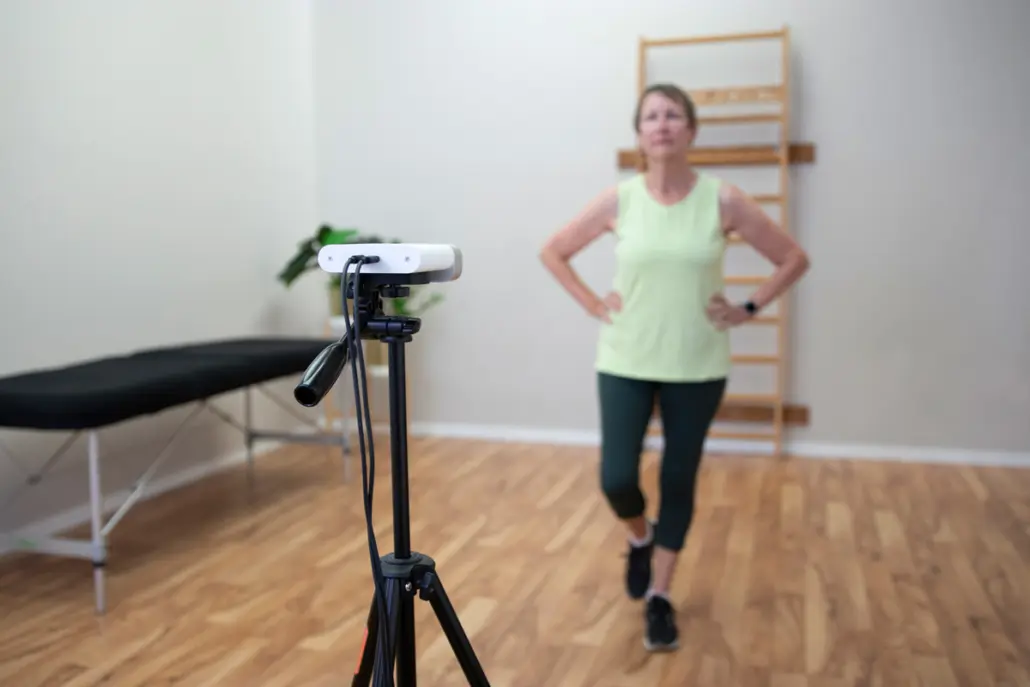
MOCAP 101
Q. Why measure human movement?
A.
Motion Capture (or mocap) is the process of recording how a person moves.
Within medical science and biomechanics, measuring human movement is an essential tool to treating and understanding pain, disease, and injury in the musculoskeletal system.
Precise measurement of human movement enables identification of small changes in how a knee twists during jumping or a spine bends during squatting, which may have important implications for injury rehabilitation or performance optimization.
Q. How does HumanTrak measure human movement?
A.
HumanTrak measures human movement (i.e., motion capture) using a single Azure Kinect 3D camera.
Time-of-Flight principle…
This camera uses the Time-of-Flight (ToF) principle to track human motion.ToF is where the camera measures the time it takes for near-infrared light to leave the camera, bounce off of an object, and return to the camera.
This technique allows the camera to determine the distance to all objects in front of it. A machine learning algorithm then identifies human bodies and joints from among the detected objects.
MOCAP 102
Q. How does HumanTrak report human movement using joint translations and rotations?
A.
HumanTrak reports both joint translations and rotations, which describe the two ways that a joint can move. During recording HumanTrak measures the translations and rotations of 23 joints in the body (Figure 1).
Joint translation
A joint translation is the joint shifting or sliding and is measured in units of centimeters or inches.I.e., when you squat the goal is to keep your knees stationary and not let them translate to the left or right.
Joint rotation
A joint rotation is a turning or spinning motion and is measured as joint angles and reported in units of degrees.I.e., during a lunge exercise, your knees and hips will rotate to lower your body towards the ground.
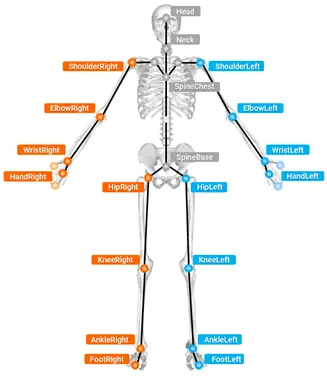
Q. How does HumanTrak report human movement using anatomical planes?
A.
HumanTrak reports human movement using the three common anatomical planes. These planes divide the body into 2D sections to allow for easier descriptions of human movement.
Anatomical planes...
Sagittal plane
Also known as: Lateral, longitudinal or anteroposterior plane.
Separates: The left from the right.
Simple term: Side view.
Example joint angle: Knee flexion/extension
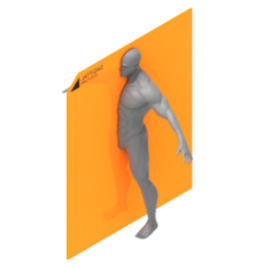
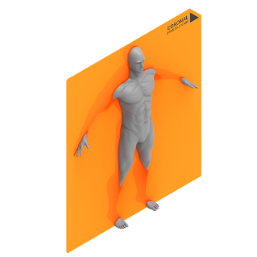
Coronal plane
Also known as: Frontal or vertical plane.
Separates: The front from the back.
Simple term: Front view.
Example joint angle: Shoulder abduction/adduction
Transverse plane
Also known as: Axial or horizontal plane.
Separates: The head from the feet.
Simple term: Top-down or bottom-up view.
Example joint angle: Hip internal/external rotation
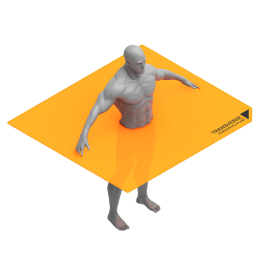
Q. How does HumanTrak report human movement using anatomical terms?
A.
HumanTrak reports human movement using a standard set of anatomical terms commonly used in clinical practice (Figure 2a&b).
Anatomical terms...
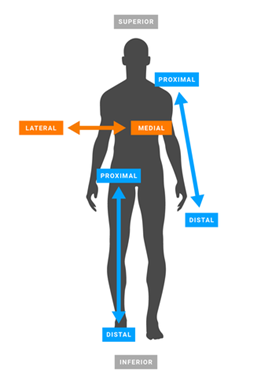

MOCAP 103
Q. What is the centre of mass and how does HumanTrak locate it?
A.
What is the centre of mass?
The centre of mass is the midpoint or average location of mass in the human body.The location of the centre of mass within the body is always changing and can be controlled by, for instance, moving your arms and legs around.
In order to stay upright the body’s centre of mass must be kept over the body’s base of support, this is typically the feet.
When the body’s centre of mass begins to move beyond the base of support, the body begins to fall over and muscles need to activate and generate force to pull the body’s centre of mass back over the base of support, or take a step to move the base of support back underneath the body’s centre of mass.
How does HumanTrak locate it?
HumanTrak measures the location of an individual’s centre of mass by measuring the location of the individual’s body parts and combining those with research data for mass distribution in the average person.
Note: The more an individual’s weight distribution differs from the average person the more error there will be in their reported centre of mass location.
Want to find out more about HumanTrak?
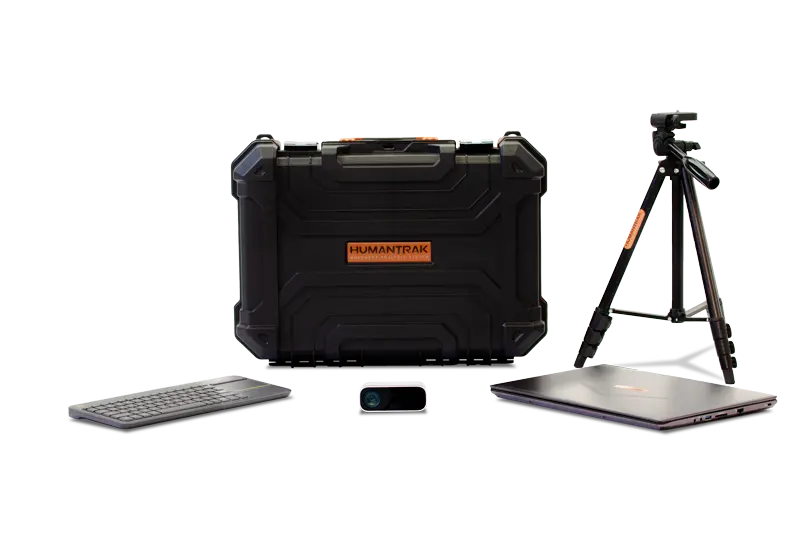
Our team of scientists and subject-matter experts at VALD Health are well-equipped to answer your questions.
Send us an email at info@valdhealth.com or click the button below.
